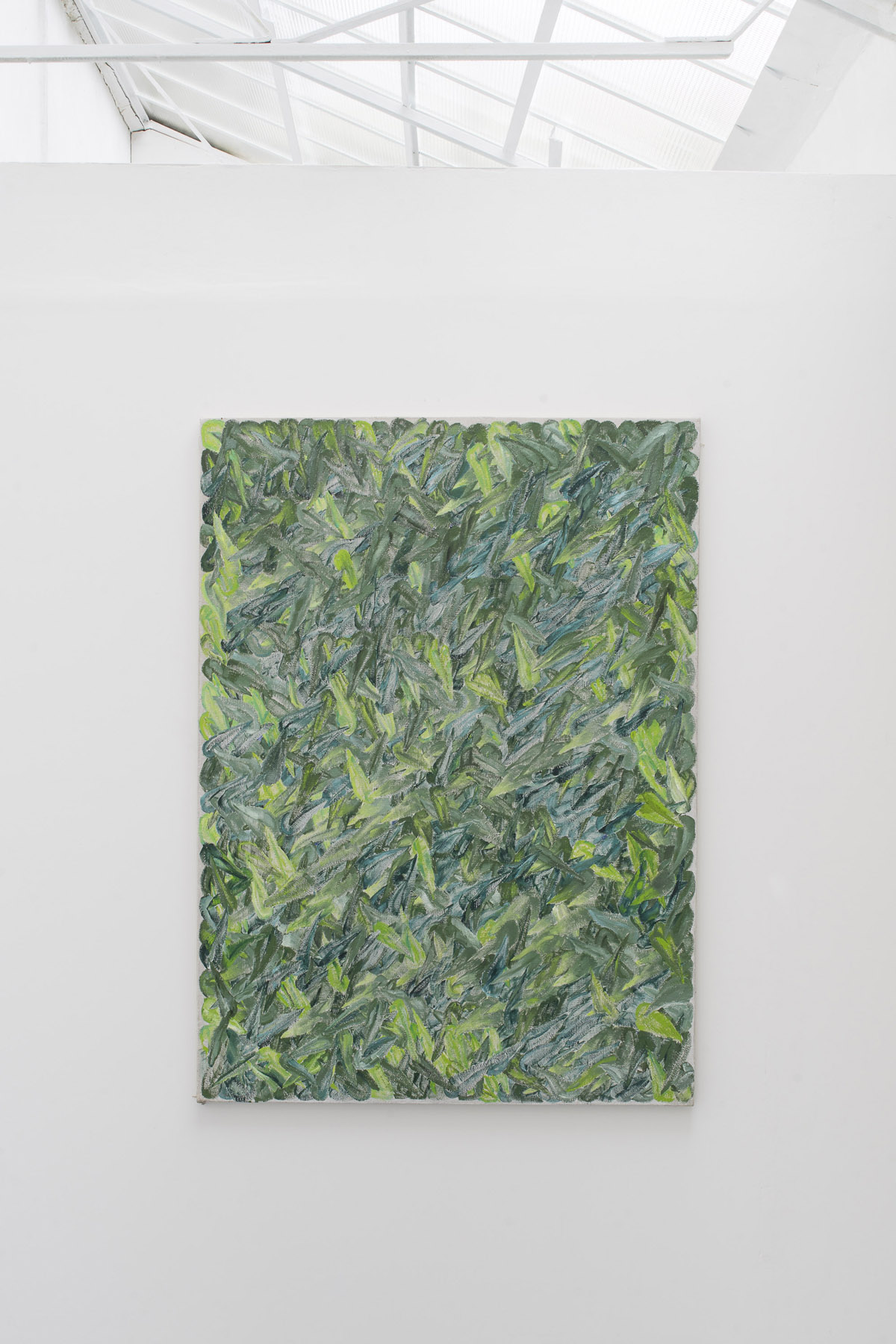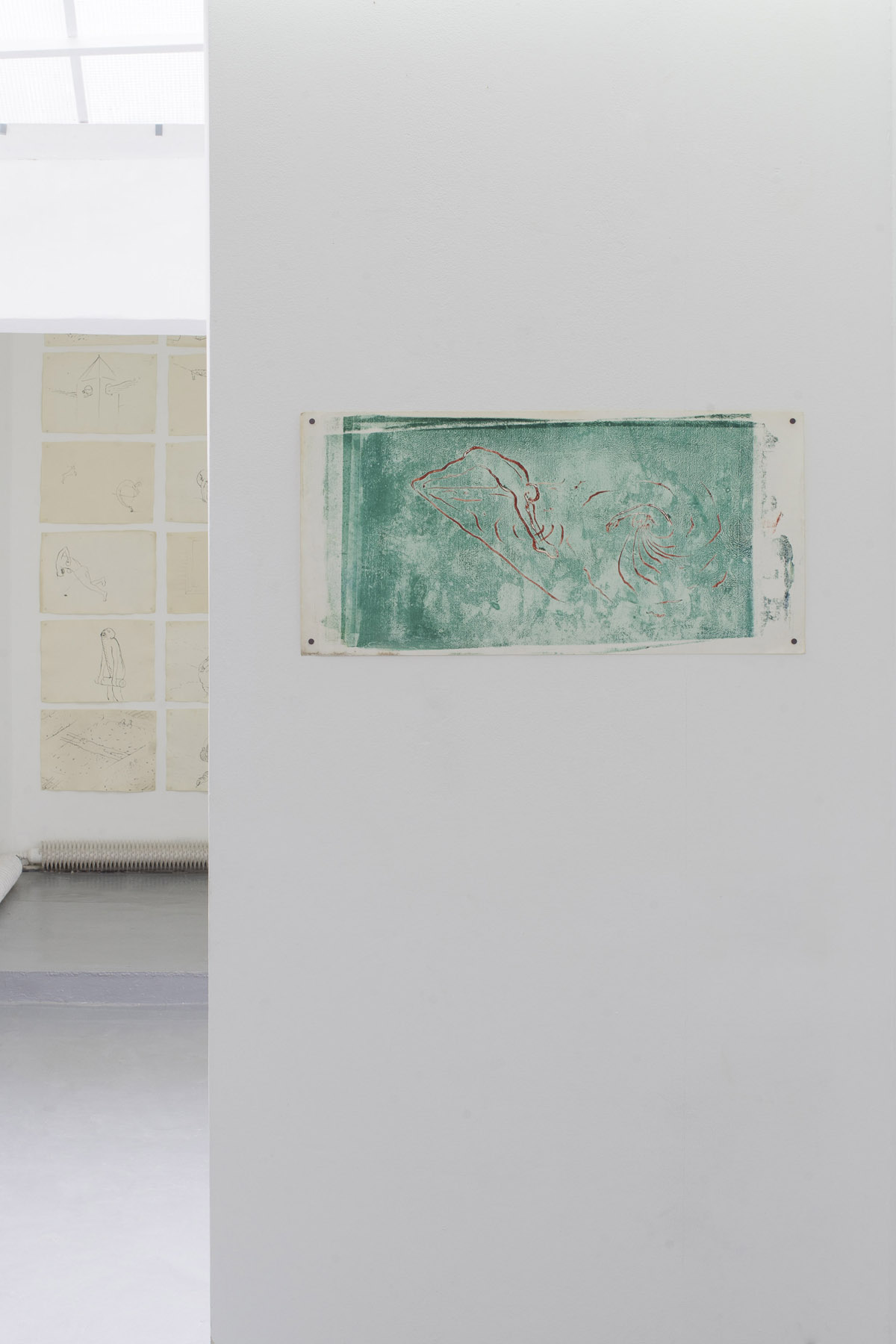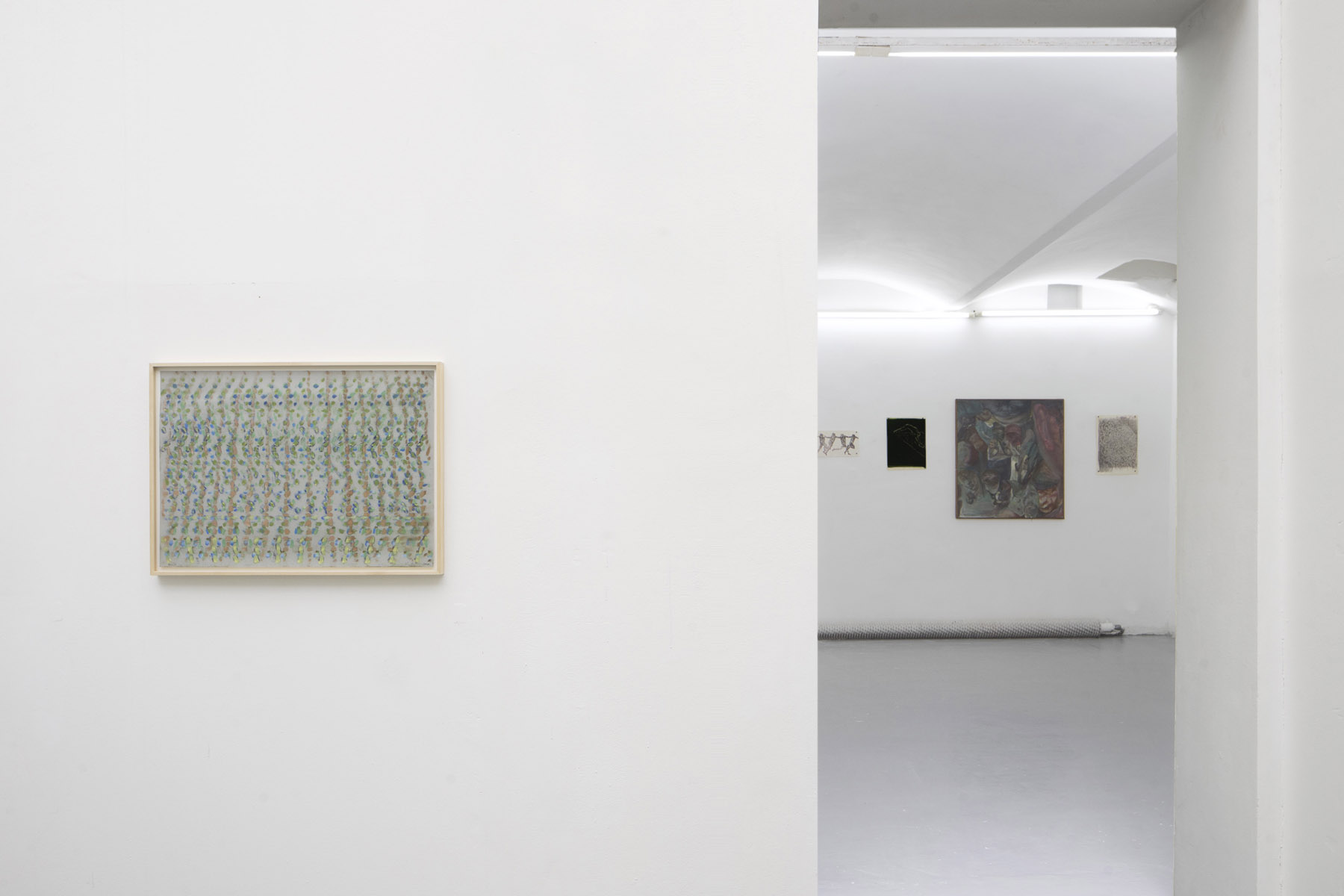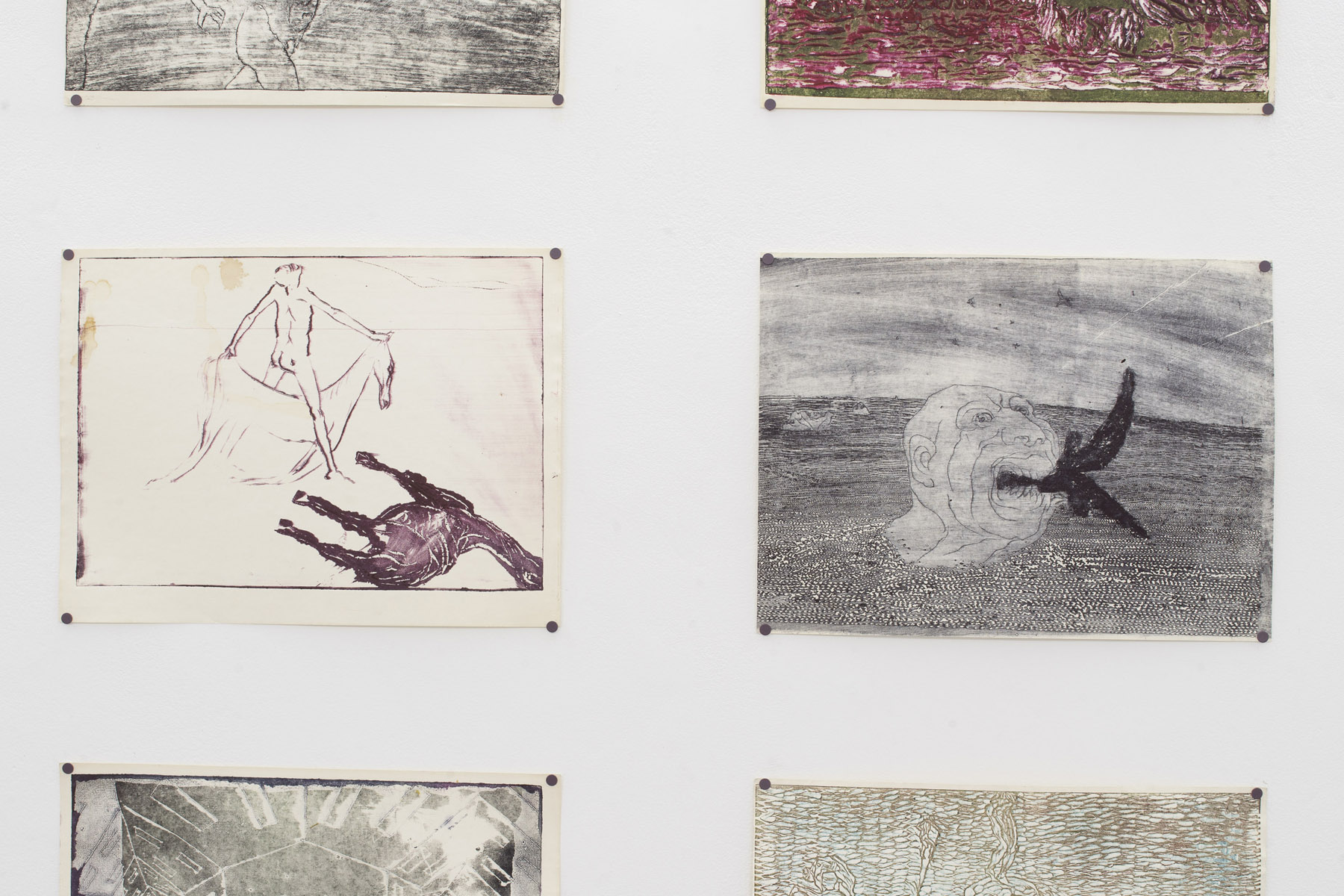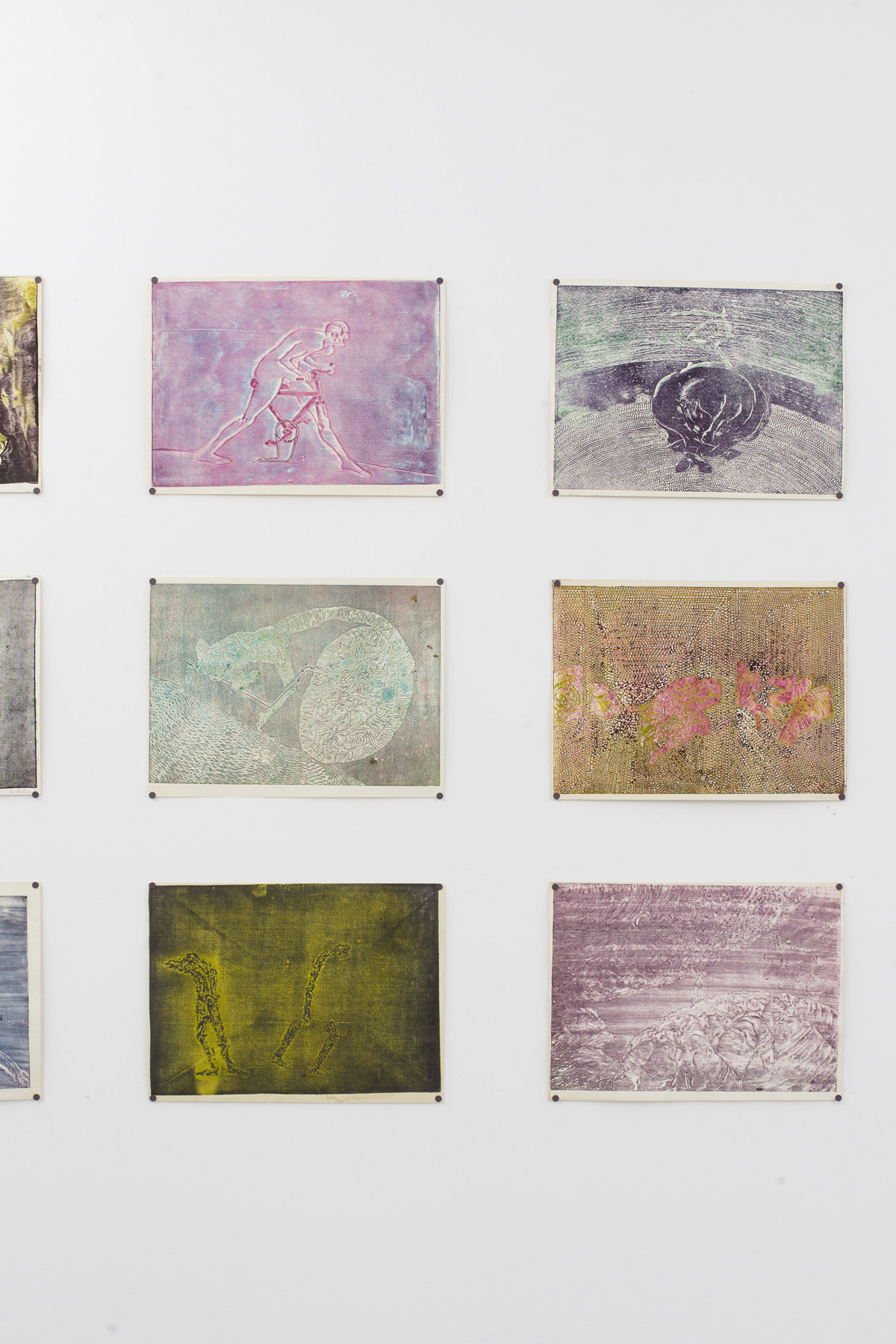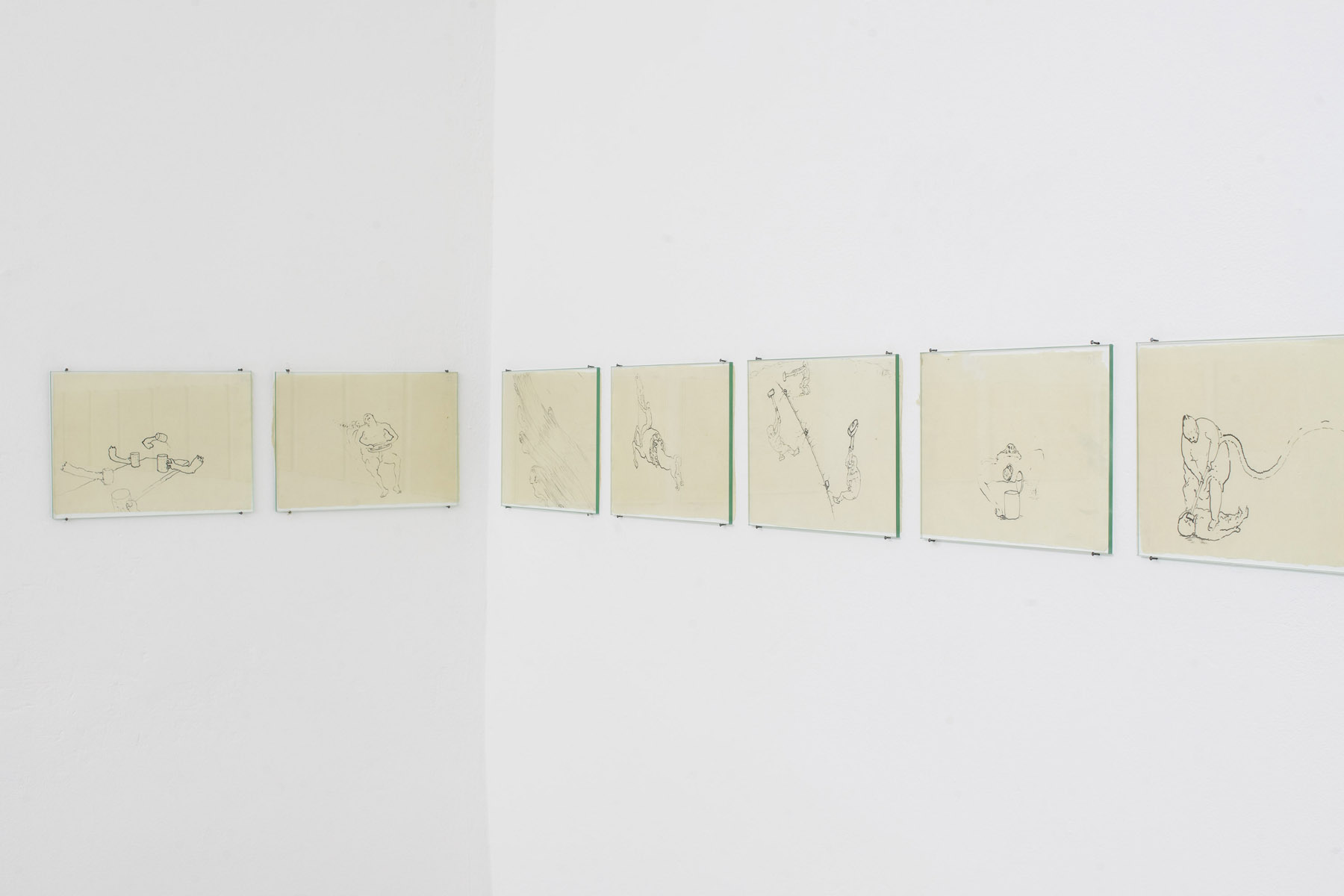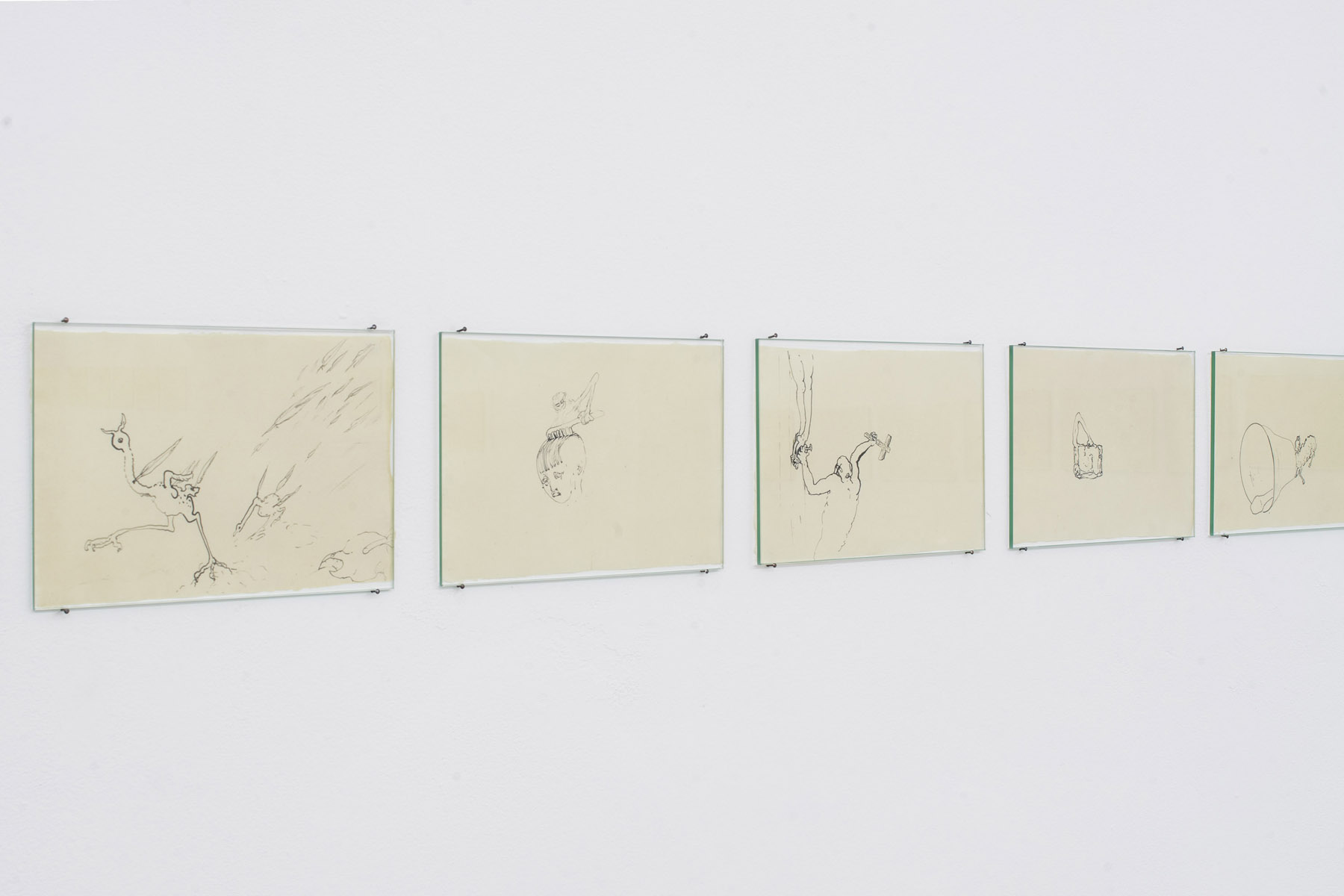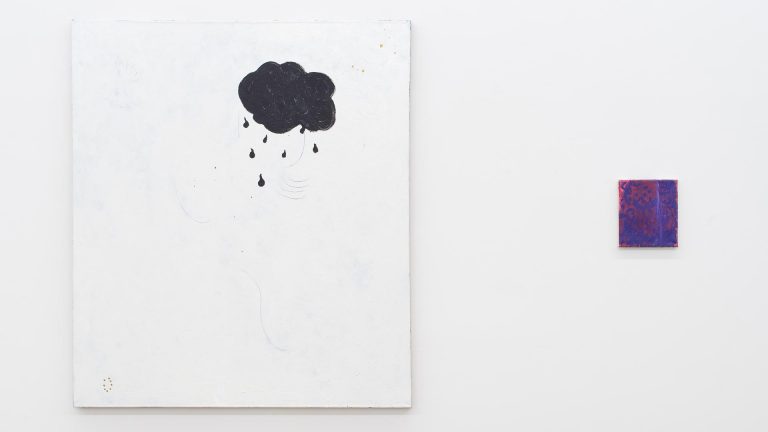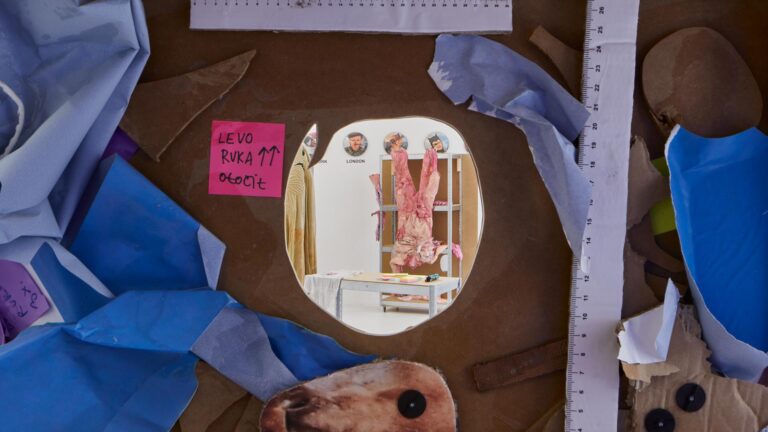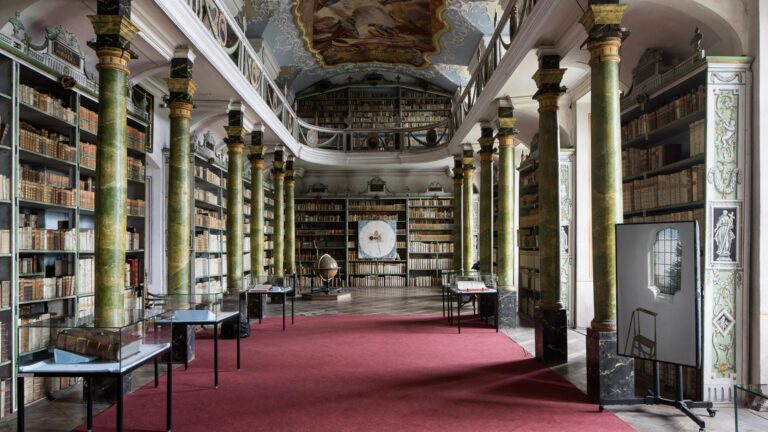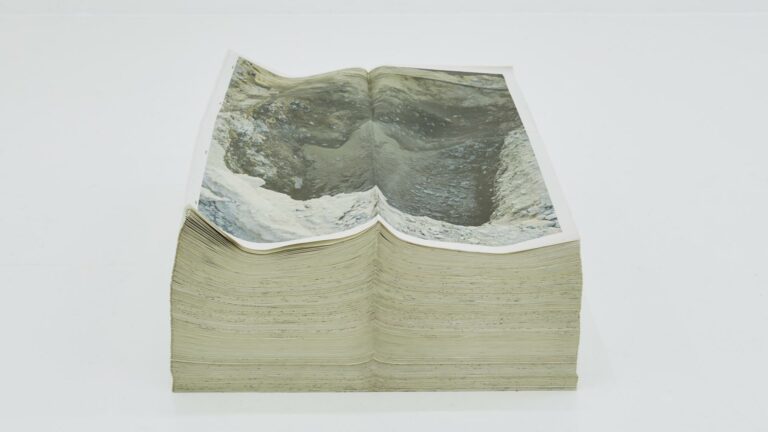Artist: Vladimír Kokolia
Exhibition title: In case the last thing you ever see is a treetop
Curated by: Lukas Hofmann
Venue: Futura, Prague, The Czech Republic
Date: November 13 – December 13, 2020
Photography & Design: Tomáš Souček / all images copyright and courtesy of the artist and Futura, Prague
Note: Exhibition publication is available here
On the ground floor of FUTURA, Vladimír Kokolia presents over 240 works selected by the exhibition’s curator. They are mainly graphic works but are also drawings, paintings, pastels and stereoscopic videos. An authored brochure is also featured, which not only explains how to perceive treetops but how to generally grasp the world around us using painterly optics of inner coherence and the philosophy of looking itself.
Vladimír Kokolia: In case the last thing you ever see is a treetop.
- One can’t see the tree for the leaves. It’s a common mistake.
- One can’t see the image for the names. It’s a fundamental mistake and results in boredom.
- Try looking at the tree and the air at the same time.
- Envision forms as if they were faces.
- Hold your gaze so that it doesn’t escape you.
- Have your eyes wide open. Don’t be discouraged if at first you don’t see much.
- Look at the tree for a long time. Half a minute might be enough. You can count down the seconds.
- Try to incorporate the entire treetop in your view so that you will see it as a single entity. This is no small matter.
- If you can’t see the entire treetop at once, then take note of the parts you do see. This is what we call images within an image.
- Then note the order of the images within the image. An image is a timebased medium.
- Notice a spiral in the tree top. Don’t expect to see a full spiral; fragments will do.
- Now notice a second spiral.
- Try to spot even a third and fourth spiral.
- Distinguish the different orders of foliage: leafy twigs, clusters of twigs, branches, clusters of branches, clusters of clusters of ches (and perhaps even clusters of clusters of clusters of branches). The higher the order, the more difficult to discern.
- Observe the visual echoes (selfsimilarity): whereby parts have a similar form as subparts, and these in turn have a similar form as the whole.
- Look for appearances of the Fibonacci sequence (1, 2, 3, 5, 8, 13, 21…), whereby every number is the sum of the two preceding ones.
- Notice the „visual frequency“ of foliage, which distinguishes an oak from a linden, a linden from an ash, an ash from a maple…
- Picture shadows as 3D objects radiating from inside the treetop.
- In the movement of branches recognize the sway of breasts.
- In the hydraulics of branches recognize an unflagging erection.
- See in the mind’s eye a fluid transition between air and wood at the molecular or even atomic level.
- A tree orients itself to the sun, not to humans. Try to visualize it from the sun’s perspective.
- Repeatedly walking around the treetop yields further images. Additional images come from the sun repeatedly circling around it.
- While the treetop may be compact, there are also many gaps. These act like pinhole cameras, projecting the surroundings – most notably the sun itself – to the other side.
- If the leaves are glossy, then notice how they mirror one another, the sky, the landscape… A few might even show your own reflection.
- Focus your gaze on the interior of the treetop and enjoy its unique microclimate of hues.
- Try to visualize the other side of the treetop.
- When you look into the treetop while looking into the sun, it’s like trying to watch a film in the glare of the projector instead of on a screen.
- If you stare through the treetop long enough you will get an afterimage that makes the treetop look as if encircled in flames. This works best in low natural light.
_
The first meeting in Vladimír’s house in Knínice lasted about eight hours. We decided that we would attempt to conceive a dictionary of his thinking. As a man who created a virtual encyclopedia of his beliefs and truths, Kokopedia, it seemed obvious that he would be able to share some organised in the form of an exhibition – in short, I wanted to preach his personal ideology and ontology. Our conversation was long. When you talk to Vladimir, you hardly ever receive the simple “yes” and “no”, each sentence and formulation zigzags and rotates in a vortex, connecting previously “non-communicating vessels”, which in my head leads to entropy rather than order. It is almost impossible to intellectually process the cohesive whole of what he communicates.
VK: I have a “mission” – I have had it for a very long time. I was probably your age when I first saw a large collection of art – I found out that “they all lied to us” – for some reason, our teachers didn’t tell us why the founders of modernism, but possibly also Baroque and Renaissance classics all worked with some Consciousness, that is now fatally forgotten or shrunken – it is not even known anymore that it even existed, so we don’t even miss it. Instead, everything is perceived aesthetically or politically (everyone understands it) – which are important modes, I take them seriously – but they take from the image only what comes out of it – so the need to enter the image is forgotten – not even the author really needs to enter anymore.
The “mission to enter the painting” occupied de facto his entire house- the library hosts not only books but myriad drawers full of works and drifts of graphics, the vast attic is occupied by dusty paintings, some of which are almost becoming geology. Vladimír holds the key to decoding the mess, though, and rightly treats the works with anxiety worthy of crown jewels. On the second visit, I forced him to SHOW ME THINGS. It was reminiscent of a video game, where the character waits to be tickled at the right spot just to lead us to our goal without hesitation. Works began to flow onto me – ink drawings on handmade paper, technically inventive graphic work, unfixed dust pastels sensitive to shock. At FUTURA, we started building partitions to bridge the architecture, create “chambers“, give direction to the passage, and group the works according to intuition and space requirements.
The first room is the last one we set up. In it, graphic works and paintings, mainly from the 1980s, struggle for our attention. LP covers next to cubist fly-throughs, the adjoining phantasmagoria of the eaters and a jester on a chain. Basically a buffet, a banquet, a delicatessen. The other rooms look calmer – four dry pastels, like the book “Magic Eye“, give us the opportunity to look through and perceive treetops at different depths. The huge wall, full from tip to tip. A large cycle of ninety ink drawings on handmade paper on it depicts human figures wrapped in sacks, tied under rails, lost in the vortex, restricted in movement, nailed to the cross. Elsewhere, we get a glimpse into the treetops again, watching “leaf by leaf“. Three series of almost mythological graphics, with similarly fatal themes as in the drawings, extending over the corner of a room. The belly button painting. Stereoscopic people in the dimension of time. A range of subtle drawings that surround us from all sides and come together in an endless circle.
Text: Lukas Hofmann

